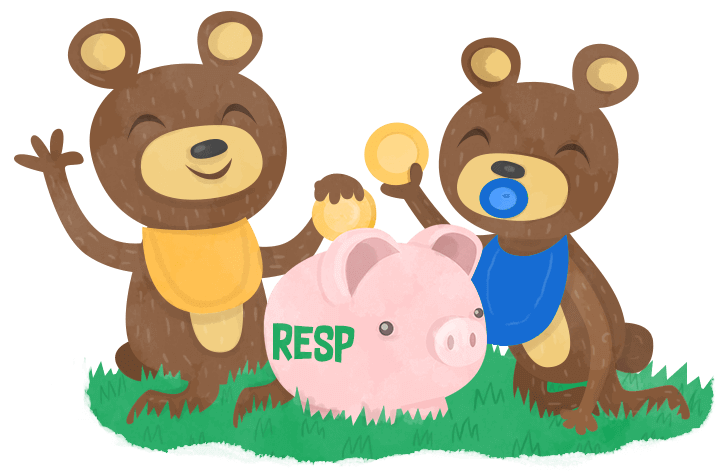
September – the official back-to-school season – signals a time for new beginnings and getting back into the swing of things after a long summer. Even if your child is not school aged just yet, there are many ways you can get a head start on planning for their educational future by opening a Registered Education Savings Plan (RESP).
The Canadian government introduced RESPs in 1974 to encourage Canadians to save for their children’s education. Basically, an RESP is a type of investment account that allows you to earn tax-sheltered investment returns. In 1998, the government further introduced the Canadian Education Savings Grants, known as CESGs, offering to match 20% (up to $500 per year) of your RESP contributions.
If that’s not convincing enough in itself, here are 4 more in-depth reasons why you should open up an RESP now:
Like we touched on above, RESPs are tax-sheltered investment accounts. Another term often used to describe an RESP is “tax-advantaged”, meaning the CRA will cut Canadians a tax break while encouraging them to save for their child’s post-secondary education. Like a Registered Retirement Savings Plan (RRSP) and a Tax Free Savings Account (TFSA), you don’t have to pay tax on capital gains and interest income, as long as your investments aren’t withdrawn early.
If your child uses RESP funds towards post-secondary tuition, books, or living expenses, the investment gains withdrawn are subject to taxes. However, the accumulated income is taxable at the student’s tax-bracket which is typically lower than the parent’s bracket. As a result, the taxes usually end up very low or nothing at all.
For every dollar you contribute to your child’s RESP, the government will contribute 20 cents up to a maximum of $500 per year ($7,200 over the life of your plan). Pretty awesome, right? That’s basically a guaranteed 20% return on your investment without even accounting for the growth of your investments.
In addition to the above federal government grants, lower-income families may also qualify for the Canada Learning Bond. Also, if you live in Quebec, Alberta, or Saskatchewan you may also be eligible for additional provincial grants.
A huge advantage to investing in an RESP is that you’re free to invest the money in any way you would like. Mutual funds, ETFs, GICs, stocks, and bonds are all open for investing when you’re looking at your RESP.
Not sure that post-secondary education? Don’t worry, if your child doesn’t use the money for school, an RESP can remain open for 36 years. So, if your child hasn’t made it to post-secondary education by then you can often transfer the money to another child or to your RRSP without getting hit with any penalties or surprising taxes.
We hope you agree that there are a lot of reasons RESPs make sense as ways to save for your child’s education, but also as a great vehicle for investing your hard-earned dollars regardless of what happens in the future.
The one thing you should be cautious of when it comes to RESPs is where you actually decide to open your RESP. Make sure you’re always opening an individual or a family RESP, where there are no stipulations on continuous contributions. Be wary of companies that offer Group RESPs. These types of RESPs are outdated financial products that unfortunately scores of Canadians are continuing to purchase every year. Group RESPs have unnecessarily high fees, typically see low investment returns, and often have extremely strict rules that can cause you to lose all of your investment gains and government grants.
Once you figure out where to open your RESP, you should also be sure you’re ready to be putting money away that you won’t need until its intended purpose. Like a Registered Retirement Savings Plan (RRSP), you shouldn’t be starting to contribute to an RESP if you have consumer debt, or if you haven’t accumulated a sufficient emergency fund. If you’re not quite ready to start your RESP savings now, no problem. For any unused years, you can catch up one year of grants each year. Ex. a $1000 grant matching a $5000 contribution.
Now that you’re well versed on the world of RESPs, it won’t be too tricky to get started. All you’ll need is two Social Insurance Numbers (SINs): your own and the beneficiary’s (the child). Ready to open your RESP today? Spend a few minutes building your financial plan today to know exactly how much you should be contributing each month to your RESP account.
YOUR FREE FINANCIAL PLAN
Are you ready to invest in your future?
Build your free plan today.
Start now